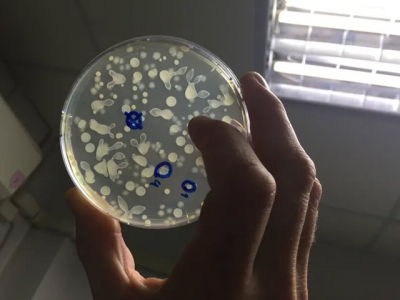How does biofloc production impact the shrimp microbiome?

Biofloc technology is a sustainable way to scale-up shrimp aquaculture, but how do the microbial flocs impact the microbiomes and overall health of farmed shrimp?
The bacteria in a biofloc system can have a probiotic effect, thereby improving the health of the shrimp
A recent literature review finds that biofloc technology can improve the health of shrimp microbiomes. It suggests that, if biofloc technology is widely adopted, the sector could reduce its environmental footprint, while improving the overall health of farmed shrimp.
The paper, published in Reviews in Aquaculture, states that the sector’s on-going challenges like early mortality syndrome (EMS), white spot disease and antimicrobial resistance (AMR) could be met if producers safeguard the underlying health of shrimp microbiomes. In theory, this is simple – but shrimp microbiomes can vary significantly, depending on the species and farm production system.
The flocs also break down ammonia and nitrates in the water, creating a healthy culture environment. This allows the shrimp to acquire a resilient microbiome – making them healthier and leading to a productive farm cycle.
The researchers focused on microbial dynamics biofloc systems, identifying the heterogeneous bacteria and proteins in the flocs that consume shrimp waste and act as feed. They found that in well-managed biofloc systems, shrimp are surrounded by a healthy variety of microbes that suppress the growth of pathogens. The flocs also break down ammonia and nitrates in the water, creating a healthy culture environment. This allows the shrimp to acquire a resilient microbiome – making them healthier and leading to a productive farm cycle.
What is a microbiome and how does it work?
The researchers defined a microbiome as a collection of microbes that form a unique ecology within a distinct habitat – usually an individual animal or fish. Unlike mammals, shrimp don’t inherit a microbiome or sophisticated immunity from their mothers. Instead, shrimp are colonised by the microorganisms in their surroundings. This acquired microbiome shifts throughout the life cycle of individual shrimp and can influence their growth and development.
In general, when the microbiome is healthy, shrimp can resist disease challenges or withstand sudden changes to the production environment and return to a healthy state. Researchers suggest that, since farmed shrimp are in constant contact with the organisms and metabolites in culture water, the whole farm biome has a direct effect on the health and productivity of shrimp.
How bioflocs and microbiomes interact
Biofloc technology was developed as a way to reduce feed and water inputs when farming shrimp. The method relies on shrimp farmers maintaining a higher carbon to nitrogen ratio in their ponds, allowing beneficial bacterial colonies (flocs) to proliferate in the culture water. The bacterial flocs break down the nitrogenous wastes and toxic metabolites that the shrimp produce before being eaten by the farmed shrimp.
Initial research suggests that bioflocs have a probiotic effect on culture water. The most common microbes in the flocs - Bacillus species, Vibrio rotiferianus, Photobacterium sp, Proteus mirabilis and Marinobacter goseongensis – suppress the growth of potential pathogens and can improve water quality.
This probiotic effect is key in how the flocs influence shrimp microbiomes. Researchers believe that as the shrimp consume the microbial flocs, their gut microbiome incorporates the beneficial bacteria. This prevents harmful bacteria from proliferating in the shrimps’ digestive system and can improve their overall immunity. This in turn can translate into fewer antibiotic inputs, which will address mounting concerns over antimicrobial resistance in shrimp farming.
Related news
 Everything you need to know about EMS in shrimp farming - Part 3
Everything you need to know about EMS in shrimp farming - Part 3 Biosecurity is a concept for preventing disease infection and preventing the disease from spreading across boundaries
 A genetic solution for tackling white spot syndrome virus in shrimp
A genetic solution for tackling white spot syndrome virus in shrimp How genomic selection can rapidly increase the resistance of whiteleg shrimp to white spot syndrome virus (WSSV) – one of the most costly diseases in the global
 A dramatic insight into how white spot infects shrimp
A dramatic insight into how white spot infects shrimp The portal of entry of one of shrimp aquaculture’s most deadly and costly diseases has finally been discovered, thanks to a research breakthrough